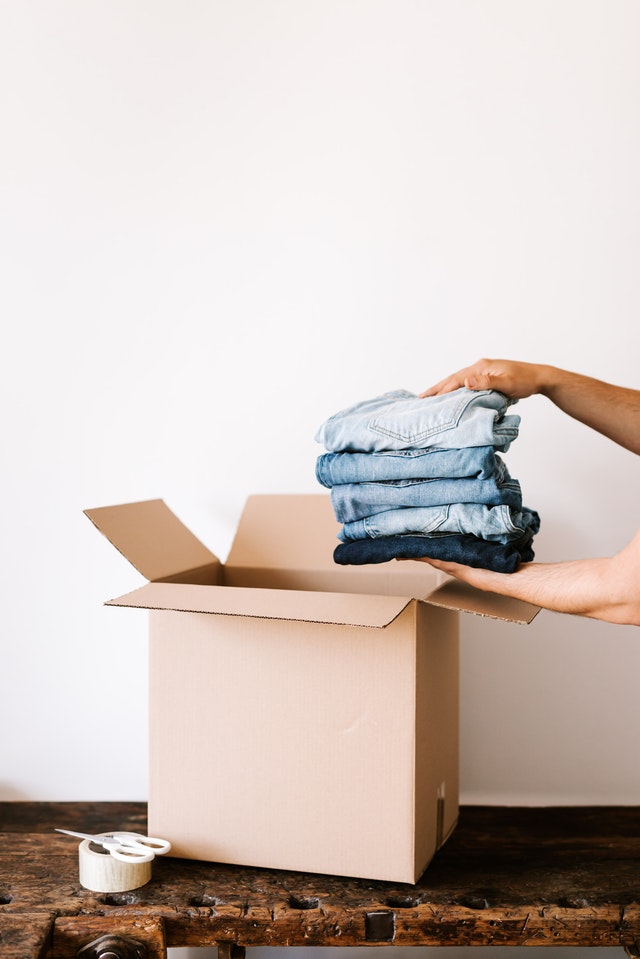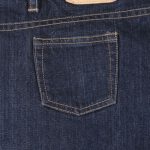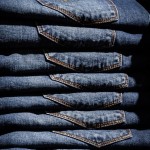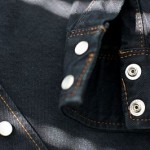Have you discovered lots of tiny fuzzballs on your favorite pair of jeans? Known as pilling, it’s a common phenomenon with many types of garments. Shirts, sweaters, shorts and jeans can all experience pilling. When this occurs, hundreds or even thousands of small fuzzballs will accumulate on the surface. It typically won’t damage or otherwise harm the garment. Nonetheless, pilling is a frustrating phenomenon that’s best avoided. You can protect your jeans from pilling, however, by taking a few basic precautions.
Wash With Liquid Detergent
Washing your jeans with liquid detergent will lower the risk of pilling. As you may know, there are two types of laundry detergent: liquid and powder. While they can both remove dirt and eliminate stains, liquid detergent is gentler than powder detergent.
The problem with powder detergent is that it has an abrasive texture. It consists of powder grains that can rub away the surface of your jeans. If you regularly wash your jeans with powder detergent, some of the denim fabric on the surface will come off. Eventually, this denim fabric may bunch up into fuzzballs or pills. Washing your jeans with liquid detergent will prevent this from happening, as liquid detergent doesn’t have the same abrasive texture as powder detergent.
Choose the Gentle Wash Setting
In addition to using liquid detergent, you should choose the gentle wash setting when washing your jeans. The gentle wash or cycle setting will protect your jeans from pilling.
Most washing machines have multiple cycle settings. If you inspect the settings on your washing machine, you should see one for either gentle or delicate. Gentle and delicate settings are essentially the same. When using them, your washing machine will spin slowly so that your clothes — including your jeans — aren’t exposed to severe mechanical stress.
Go With Heavy Jeans
Another tip to prevent pilling is to choose heavy jeans. Heavy jeans, as the name suggests, are characterized by their weight. They weigh more than other, lighter jeans. The Classic Heavy Blue Hard Wash Whisker Jeans sold here at MakeYourOwnJeans, for instance, are made of 14.5 ounces of denim. Therefore, they weigh more than other, lighter jeans.
Heavy jeans aren’t just strong and durable; they offer a high level of protection again pilling. Pilling is the result of fabric breaking away from the surface of a garment, at which point it bunches up into fuzzballs. While it can occur with all types of jeans, it’s less likely to occur with heavy jeans because of their heavy weight.
Avoid Overly Distressed Jeans
There’s nothing wrong with wearing distressed jeans. Distressed, in fact, is one of the most popular styles in which jeans are made. They offer a classic, “broken-in” appearance that’s not found in other styles. At the same, distressed jeans are soft and comfortable. But if you’re going to buy a pair of distressed jeans, you may want to avoid jeans that are overly distressed.
Overly distressed jeans are those that are severely worn and degraded. All distressed jeans feature some level of wear and tear. After all, that’s what distinguishes them from standard and non-distressed jeans. Overly distressed jeans simply feature a higher level of wear and tear, which makes them more susceptible to pilling.

Secure Fasteners Before Washing
It’s a good idea to secure all the fasteners on your jeans before washing them. Fasteners consist of zippers and buttons. Some jeans only have a zipper, whereas others only have buttons. Conversely, some jeans have both a zipper and one or more buttons. Regardless of what type of fasteners your jeans have — as well as where they are located — you should secure them before washing your jeans.
Securing the fasteners on your jeans will protect them from pilling. In other words, you should pull up the zipper and fasten the buttons. When not secured, fasteners such as zippers and buttons can rub against your jeans so that pilling occurs.
Add a Fabric Softener
Adding a fabric softener to your washing machine can better protect your jeans from pilling. Fabric softeners are products that, as the name suggests, are designed to soften garments. There are different types of fabric softeners, but most of them work by coating garments with a thin and invisible layer of a softening agent.
If you constantly find fuzzballs on your jeans, you should try washing them with a small amount of fabric softener. You can still wash them with liquid detergent; just add a small amount of fabric softener to the load as well. The fabric softener will make your jeans softener while simultaneously protecting them from pilling.
Tips to Deal With Pilling
Assuming you take the precautions listed above, your jeans will be better protected from pilling. Nonetheless, pilling can still occur in certain scenarios. It’s a common phenomenon that involves fuzzballs developing and forming on the surface of a garment. How do you deal with pilling exactly?
One way to deal with pilling is to use a lint roller. Running a lint roller over your jeans will remove the fuzzballs with which pilling is associated. Lint rollers consist of one-sided tape that’s able to pick up and remove these fuzzballs.
You can also use a sweater shaver to deal with pilling on your jeans. Sweater shavers are handheld razors that are designed specifically to remove fuzzballs. While they are most commonly used for sweaters, you can use them for jeans as well. A sweater shaver will scrape off the fuzzballs so that your jeans have a smooth surface.
Steaming your jeans can help to eliminate fuzzballs on them. When you expose your jeans to steam, they’ll become softener. Steaming will essentially relax the denim fabric so that your jeans aren’t as rigid or stiff. Additionally, it will release fuzzballs on the surface of your jeans. You can deal with pilling by either using a lint roller, using a sweater shaver or steaming your jeans.











